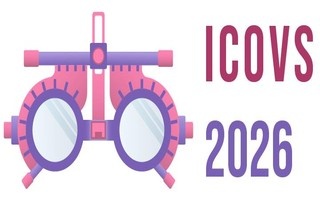3rd International Conference on
Ophthalmology & Vision Science
June 04-05, 2026 | Paris, France

IOVS 2026

Albert Einstein College of Medicine, USA
Abstract:
Purpose: To evaluate the prevalence, type, and management of strabismus and amblyopia in children with ASD in academic hospitals.
Methods: We analyzed 10,134 children with ASD from the SOURCE database. Diagnoses and procedures were identified using ICD and CPT codes. Prevalence, odds ratios, and surgical rates were calculated.
Results: Strabismus or amblyopia was present in 38% of ASD patients (95% CI 0.37–0.39). Exotropia was more common than esotropia (OR 1.45 vs. 1.07). ASD patients presented younger (mean age 6.14, SD=4.68) than controls (mean age 8.07, SD=6.57). In ASD patients with strabismus, 17.9% underwent surgery. Male predominance and racial variation were noted. While referral bias limited interpretation of control data, ASD findings were internally consistent.
Conclusion: Children with ASD have a high prevalence of strabismus, with distinct patterns in type and treatment. Findings support earlier screening and tailored care to improve visual outcomes in neurodivergent children.
Precis
Children with Autism Spectrum Disorder (ASD) show a high prevalence of strabismus and amblyopia. In a national database of 10,134 ASD patients, 38% had one or both conditions. Exotropia was more common than esotropia, and 17.9% underwent surgery, often at older ages. Findings support early screening and tailored care, as patterns of diagnosis and intervention differ from neurotypical children.
Biography:
Julia Goetz is a fourth-year medical student at Albert Einstein College of Medicine in the Bronx NY and a graduate of the University of Florida, where she earned her B.S. in Biology as well as her B.S. In Behavioral and Cognitive Neuroscience. Julia's research interests include strabismus and amblyopia, uveitis, as well as ocular surface diseases. She is deeply committed to the field of ophthalmology and her goal is to specialize in pediatric ophthalmology.
